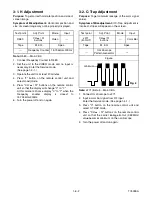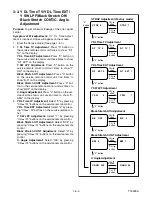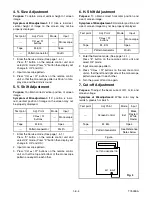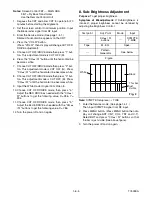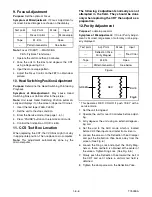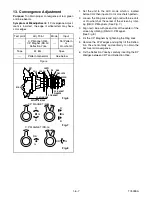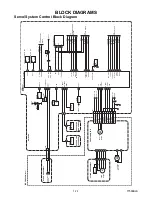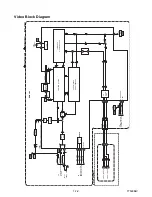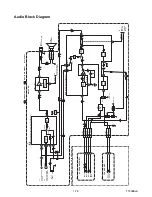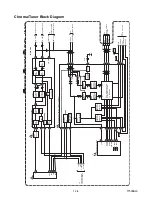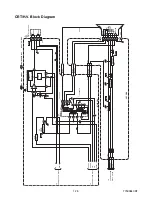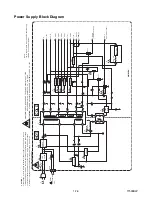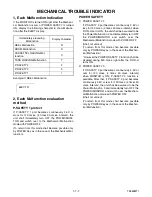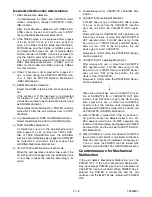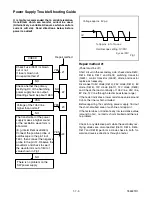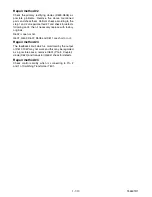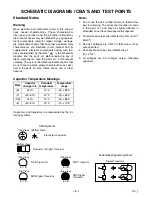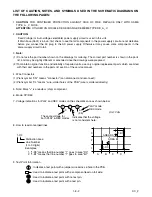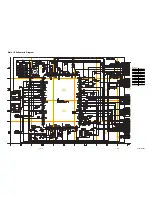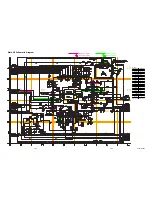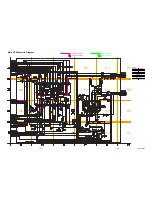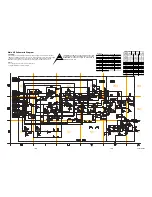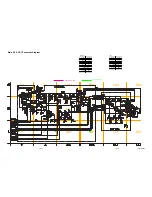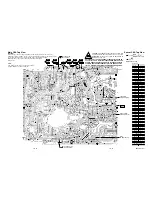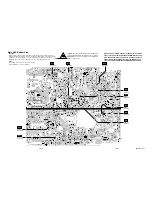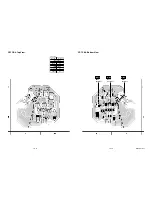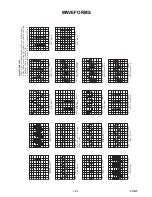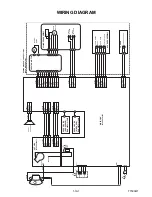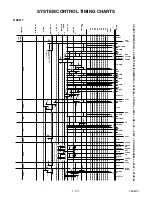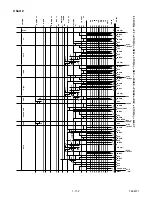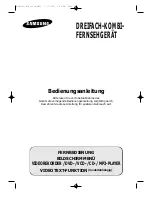
1-7-9
T5553TR1
Check Fuse (F601) is blown
out or not.
If fuse is blown out,
do repair method #1
Check whether the primary
rectifying DC of the Switching
power supply has an output.
(Reading should be about 168V.
Voltage of the 105V line
higher than normal?
The transformer of the power
supply makes a higher sound
or the oscillation wave form is
abnormal.
(E.g. intermittent oscillation)
Connect the positive probe of
oscilloscope to the pin 16 of
T601, then connect the negative
probe to the pin 12. Observe the
waveform and check to see if
the waveform is out of limit of
value shown in Fig.1.
There is no problem on the
SW power supply
CHECK
#1
#2
#3
#4
Repair method
NO
NO
NO
YES
YES
YES
YES
NO
Power Supply Trouble Shooting Guide
It is highly recommended that a variable isolation
transformer which can monitor current be used.
(Alternatively a variable AC source which monitors
current will do). Read directions below before
power is added!
Repair method #1
(Power must be off)
Short circuit in the secondary side. check diode D613,
D614, D616, D617 and D618, switching transistor
(Q601), control transistor (Q602), diode and resistor
replace as necessary.
Disconnect 105V diode (D613), 25V diode (D614), 8V
diode (D616), 12V diode (D617), 12V diode (D618)
and Check the load continuity of 105V line, 25V line,
8V line, 12V line through a tester (resistance range).
If the tester indicates a lower resistance value around
0 ohm, the line is short-circuited.
Before repairing the switching power supply, find out
the short-circuited area of such line and repair it.
If the tester does not indicate any low resistance value
(around 0 ohm), no load is short-circuited and there is
no problem.
Check for any defective parts while the secondary rec-
tifying diodes are disconnected (D613, D614, D616,
D617 and D618) perform a diode check in both for-
ward and reverse directions through a tester.
Fig.1
0V
Voltage approx. 5Vp-p
T=Approx. 6 to 14 sec
Oscilloscope setting: 1V/DIV.
2 sec./DIV

